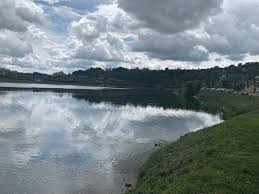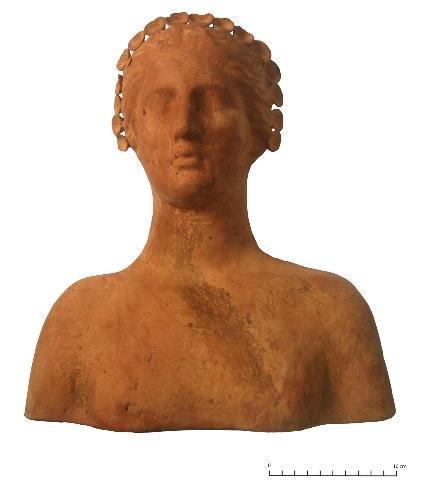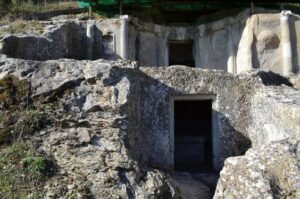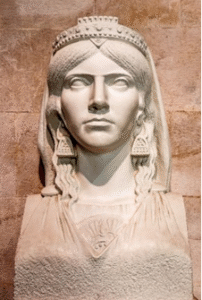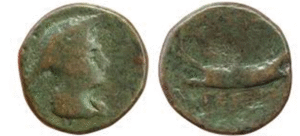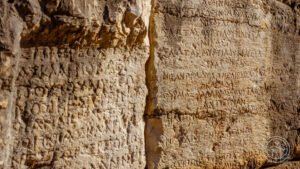Event
Along the shores of the lake, the first leaves of the white water lilies had just begun to unfurl. Soon, the maidens of the nearby village would take part in the ceremonies held in honor of the Goddess of the Waters. Since ancient times, the lake had been considered sacred. Young women, at the threshold of marriage, would choose the finest figurines — adorned with garlands and clusters of unopened flowers, pure and unblossomed as they themselves were — and offer them to the goddess, asking for her protection, for the fertility of the land and for happiness in their future homes. The maidens imbued those small clay figures with their wishes and dreams, their prayers and hopes. Through them, they sought the godesses’s favor— her blessings to move forward in life, to build a family and to bloom like the lilies that graced the lake’s surface each spring.
On the last evening of spring, as the air still carried the scent of damp earth and the water flowed silently, the young women descended by the lake. Dressed in white, their hair loose and woven with wildflowers, walking barefoot over the tender grass. Each carried in her hands her own figurine — the delicate image of her purity and devotion. The elder women followed from a distance, silent but proud. They knew this path well, for they too had once walked it, in the same ancient ceremony.
They reached the blessed lake. In the stillness of the night, one could hear the distant song of birds and even the soft rustling of ripples upon the water. One by one, the maidens knelt and placed their figurines upon the broad leaves of water lilies. Gently, without a sound, they set them afloat. In the moon’s pale glow, the figurines began to drift, some slowly and others swiftly, until they vanished from sight, sinking into the lake’s silence and depths.
By morning, when the first rays of sunlight touched the water, new lilies had blossomed — white and pure like the maidens’ own souls. The Goddess of the Waters had accepted their prayers. On quiet spring nights, when the moon shimmered on the lake’s surface and the breeze carried the lilies’ fragrance, sweet melodies rose from houses nearby — ancient songs, long prayers, blessings and endless tales spun around the girls who had been received by the Goddess. These were unbroken threads weaving across generations, keeping alive hope and replenishing the strength of life in this sacred place.
On the last evening of spring, as the air still carried the scent of damp earth and the water flowed silently, the young women descended by the lake. Dressed in white, their hair loose and woven with wildflowers, walking barefoot over the tender grass. Each carried in her hands her own figurine — the delicate image of her purity and devotion. The elder women followed from a distance, silent but proud. They knew this path well, for they too had once walked it, in the same ancient ceremony.
They reached the blessed lake. In the stillness of the night, one could hear the distant song of birds and even the soft rustling of ripples upon the water. One by one, the maidens knelt and placed their figurines upon the broad leaves of water lilies. Gently, without a sound, they set them afloat. In the moon’s pale glow, the figurines began to drift, some slowly and others swiftly, until they vanished from sight, sinking into the lake’s silence and depths.
By morning, when the first rays of sunlight touched the water, new lilies had blossomed — white and pure like the maidens’ own souls. The Goddess of the Waters had accepted their prayers. On quiet spring nights, when the moon shimmered on the lake’s surface and the breeze carried the lilies’ fragrance, sweet melodies rose from houses nearby — ancient songs, long prayers, blessings and endless tales spun around the girls who had been received by the Goddess. These were unbroken threads weaving across generations, keeping alive hope and replenishing the strength of life in this sacred place.
There is no audio content available. Add an audio URL in the admin panel.
There is no video content available. Add a video URL in the admin panel.
Historical period:
4th–2nd centuries BCE
Historical overview of the period
The lakes of Dumre in central Albania are of karstic origin, formed through the natural dissolution of limestone over millions of years — a typical phenomenon of karst landscapes. They vary greatly in size and depth, forming an essential part of the region’s ecosystem and serving as vital sources for agriculture and daily life. Lake Seferan, located near Belsh, is among the largest of the Dumre lakes, surrounded by hills and hidden places that for centuries have been imbued with stories and popular beliefs.
Conditions that gave rise to the event
The great drought of 1982 caused the water level of Lake Seferan to drop significantly, revealing a remarkable treasure of archaeological objects, most notably terracotta figurines of young women and maidens. The discovery identified the site as a sacred place where women — at pivotal moments of transition in their lives — offered gifts to deities associated with water, fertility, marriage and childbirth. The lake, whose very essence is water, embodies both life and fertility, for nature and for humankind alike.
Message
This story conveys the profound message that key moments of a woman’s passage into adulthood — love, marriage and the bond with life itself — take on a sacred meaning when experienced in harmony with nature, tradition and the deep rhythms of the human spirit. Such experiences are no mere personal events, but part of the uninterrupted life cycle in which each generation supports and guides the next, ensuring the renewal of life and meaning.
Meaning in Today’s Context
In a world where individualism is on the rise, the passage aims to emphasize the strength of the connection between generations. Elderly women who watch in silence, songs passed from one generation to the next—these are collective memories, roots that provide stability to personal identity. In today’s context, this passage is a quiet call for grounding, awareness, and connection to a spiritual and natural heritage, which is not only beautiful but essential for maintaining balance and identity in turbulent times.
Bibliography
- Ceka, Neritan; Zeqo, Moikom. “Kërkime nënujore në vijën bregdetare dhe ujërat e brendshme të vendit tonë” [“Underwater research along the coastal line and inland waters of our country”], Monumentet 28 (1984/2), pp. 127–136.
- Lamaj, Thanas. Folklori i Elbasanit [The folklore of Elbasan]. Tiranë: Akademia e Shkencave, 1990.
- Institute of Folk Culture, Archive “Faiths and Rites,” Elbasan, interviews collected in Dumre, 1978–1985.
- Domi, Mahir. Motivet mitike në folklorin shqiptar [Mythical motifs in Albanian folklore]. Tiranë: SHBLSH, 1987.
- Muka, Belisa. “Offrandes votives dans un lac: le cas de Seferan (Albanie),” in Hyusecom-Haxhi, Stéphanie & Muller, Arthur (eds.), Figurines en contexte: Présence muette dans le sanctuaire, la tombe et la maison, Actes du XXXVème Symposion International, Lille, 2015, pp. 218–231.
